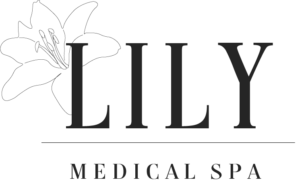In recent years, the field of medical spas has witnessed a significant transformation, driven by advancements in non-invasive technologies. These state-of-the-art innovations offer patients a wide range of aesthetic and rejuvenation treatments without the need for surgery or extensive downtime. As the demand for minimally invasive procedures continues to rise, medical spas have become increasingly popular among individuals seeking to enhance their appearance and improve overall well-being. This essay explores some of the most prominent non-invasive technology trends in medical spas, highlighting their benefits and potential impacts on the industry.
Laser Technology in Medical Spas
Laser technology has revolutionized the way medical spas approach various cosmetic and dermatological treatments. From laser hair removal and skin rejuvenation to scar reduction and tattoo removal, lasers have become a versatile tool for addressing an array of aesthetic concerns. The precision and control offered by laser devices allow practitioners to target specific areas while minimizing damage to surrounding tissues. Moreover, advancements in laser technology have led to the development of fractional lasers, which promote faster healing and reduce recovery times. As medical spas continue to invest in cutting-edge laser platforms, patients can expect safer, more effective, and less invasive procedures.
Radiofrequency (RF) and Ultrasound Devices
Radiofrequency (RF) and ultrasound devices have emerged as popular non-invasive technologies in medical spas, offering an alternative to surgical facelifts and body contouring procedures. RF devices deliver controlled energy to the deeper layers of the skin, stimulating collagen production and tightening sagging skin. Similarly, ultrasound technology provides a non-surgical facelift option by utilizing focused ultrasound waves to lift and tighten the skin. Both RF and ultrasound devices are known for their ability to provide gradual and natural-looking results, making them attractive options for patients seeking subtle improvements without the downtime associated with surgery.
Cryolipolysis and Fat Reduction
Cryolipolysis, commonly known as “fat freezing,” is another breakthrough non-invasive technology making waves in medical spas. This innovative procedure targets and destroys fat cells by subjecting them to controlled cooling, resulting in a reduction of localized fat deposits. Cryolipolysis has gained popularity due to its ability to selectively target fat cells without damaging surrounding tissues. Patients appreciate its non-surgical nature, as it allows them to resume their daily activities immediately after the treatment. As technology in this area advances, medical spas are likely to witness even more effective and efficient fat reduction techniques.
Non-Invasive Skin Tightening with High-Intensity Focused Ultrasound
(HIFU)High-Intensity Focused Ultrasound (HIFU) is a cutting-edge technology used in medical spas to tighten and lift the skin. By delivering focused ultrasound energy to specific depths beneath the skin’s surface, HIFU stimulates collagen production, resulting in a firmer and more youthful appearance. One of the significant advantages of HIFU is that it can target multiple layers of the skin without causing harm to the outermost layer. Consequently, patients experience minimal discomfort and require little to no downtime after the procedure. As HIFU devices continue to evolve, medical spas will likely witness enhanced results and broader applications.
Platelet-Rich Plasma (PRP) Therapy
Platelet-Rich Plasma (PRP) therapy is a non-invasive technique that utilizes the body’s own healing properties to rejuvenate the skin and stimulate hair growth. In this procedure, a small amount of the patient’s blood is drawn and processed to extract platelet-rich plasma, which is then injected into the targeted area.PRP contains growth factors that promote collagen production, leading to improved skin texture and elasticity. Medical spas have also adopted PRP therapy to address hair loss, as the growth factors can stimulate dormant hair follicles, resulting in new hair growth. As this treatment gains popularity, medical spas are expected to explore additional applications for PRP therapy.ConclusionThe non-invasive technology trends in medical spas represent a significant advancement in the cosmetic and aesthetic industry. With the increasing demand for minimally invasive procedures, these cutting-edge technologies provide safe, effective, and convenient options for patients seeking to enhance their appearance without undergoing surgery. Laser technology, RF and ultrasound devices, cryolipolysis, HIFU, and PRP therapy are just a few examples of the transformative innovations reshaping the medical spa landscape. As technology continues to evolve, medical spas will undoubtedly see further progress, bringing new possibilities and improved outcomes to their ever-growing clientele.
However, it is essential to note that while these treatments are generally considered safe, individuals should consult qualified healthcare professionals before undergoing any non-invasive procedures to ensure personalized and effective treatments.

